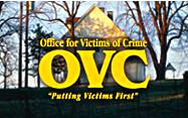Needs of Specific Populations
Although rural jurisdictions share some common characteristics such as large geographic territories, small populations, and limited community resources, they may differ greatly by region and across or within counties (Weisheit et al. 1994). Underrepresented groups or populations with specific needs and characteristics may present unique challenges for rural providers. Some examples of specific populations and the additional challenges they raise are presented below.
- Because some rural jurisdictions are considered seasonal destinations, tourists or vacationers occasionally become victims of crime. Providers must maintain contact with these victims even after they leave the area.
- Migrant workers move from one temporary place of employment to another, which makes victim notification more difficult, expensive, and time consuming.
- Helping male victims of sexual assault or domestic violence is compounded by the lack of community resources in rural areas. As one service provider reported, "The only shelter we have here is a female shelter and, even then, we don't have enough room for victims." (Angie Beason, Twin Falls County, Idaho, personal correspondence, December 5, 2002).
- Immigrant women may be the subjects of discrimination, as well as victims of crime (Websdale 1998). The precariousness of their immigrant status and often-perceived dependence on their batterers for continued residence in the United States may discourage immigrant victims from seeking help, reporting their abuse, or cooperating with the criminal justice system (Grama 2000). Language and cultural barriers raise additional problems; courts may pay for a translator for a non-English speaking defendant, but not for a non-English speaking victim.
- Minority women in rural communities may face discrimination, racism, and sexism (Websdale 1998). As Crenshaw (1993) observes, some minority women may even choose to stay in an abusive situation rather than struggle against racism to improve their situations.
Educating the community on the special factors surrounding rural victims of crime in specific populations is key to addressing these issues. Reaching out to churches and other faith organizations, schools, hospitals, and local centers or stores can bring attention to the unique situations of victims in specific populations.
In addition, a wealth of information and strategies for helping immigrant or migrant women to survive abuse can be gleaned from national organizations such as those mentioned in the section on victim advocacy training and technical assistance and listed in appendix A.5 The National Network to End Violence Against Immigrant Women offers an expansive network of information, technical assistance, and training to advocates, social workers, and other criminal justice-related providers who work with battered immigrant and/or trafficked women. The network is chaired by three major organizations: the Family Violence Prevention Fund, the National Organization of Women's Legal Defense and Education Fund, and the National Immigration Project of the National Lawyers Guild. Each provides trainings and technical assistance on different aspects of the fight to end abuse against immigrant women. Details on the network, and contact information for all organizations involved with it, can be found on the Futures Without Violence Website.
The Rural Leadership Project Manual,6 a product of the collaborative efforts of the U.S. Department of Justice's Office on Violence Against Women and the Family Violence Prevention Fund (FVPF), discusses how to create and sustain an immigrant leadership project. According to Monica Arenas, program assistant at FVPF, "The manual is based on the assumption that immigrant women are their own best advocates and are best able to assist other battered immigrants. They can gain the trust of immigrant communities better than an outsider, and they know what the problems they face are and how to develop solutions." This capacity is especially critical given that many immigrant farmworker communities are migratory and cannot develop sustained relationships with formal criminal justice and victim service agencies.
|







